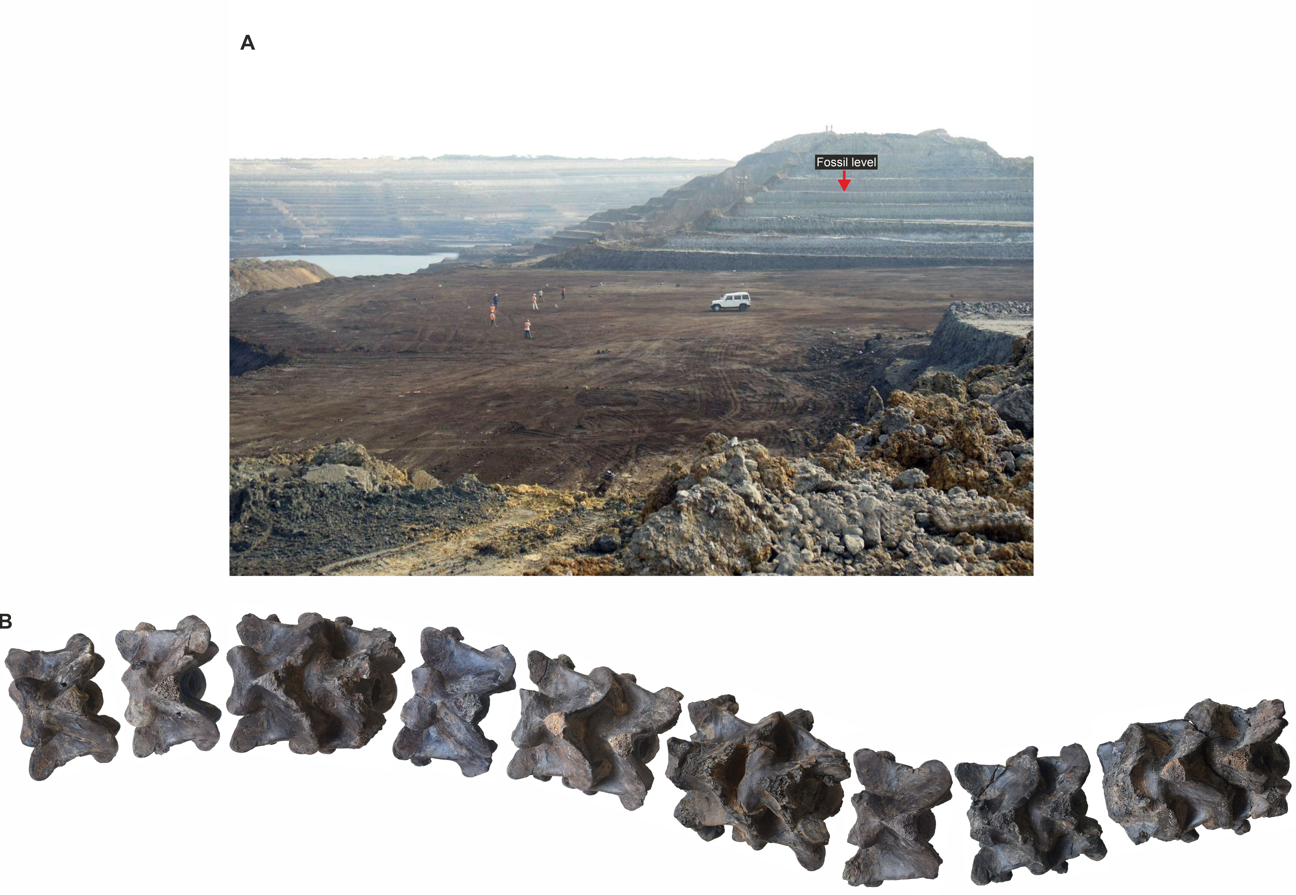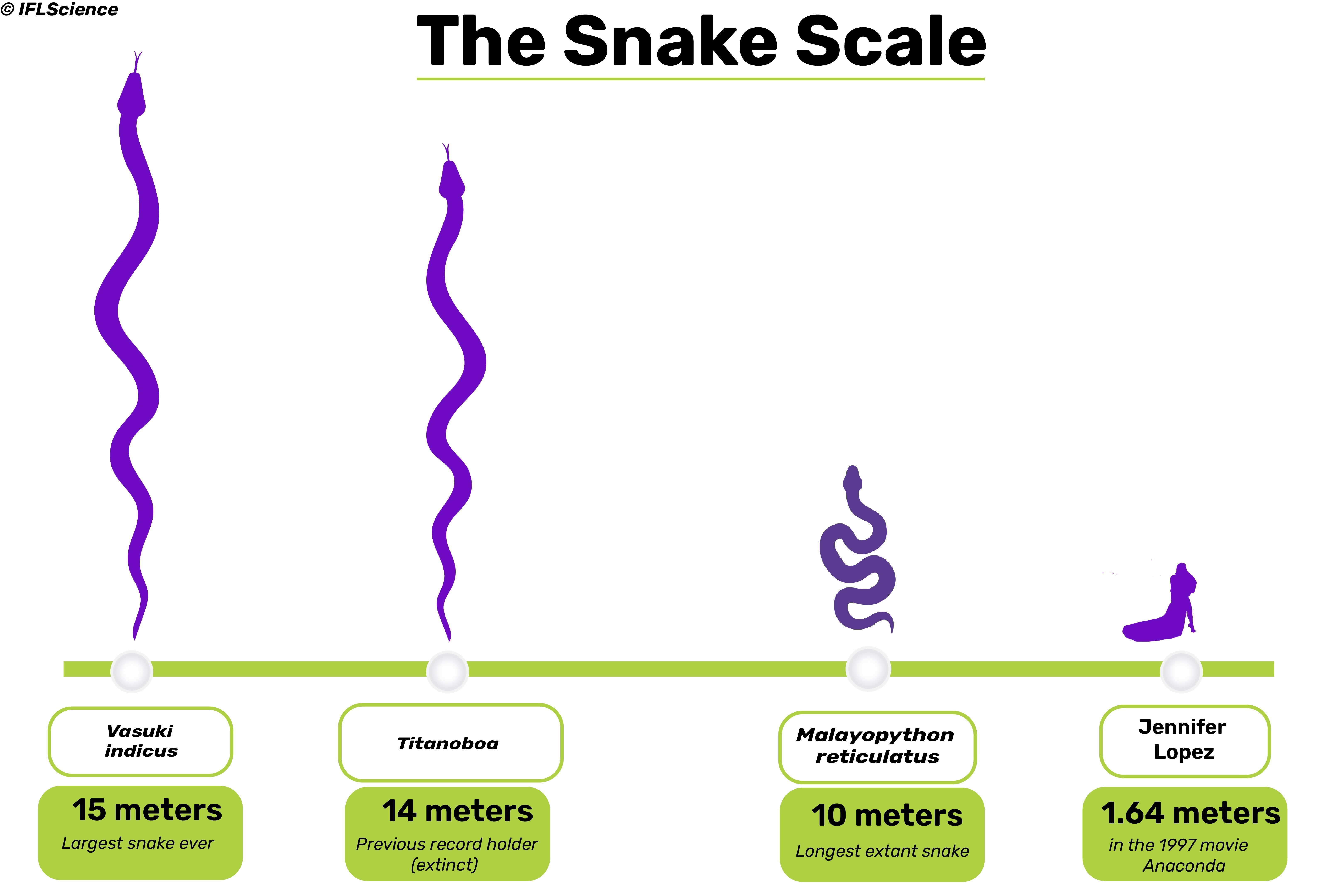A new species of prehistoric snake may be one of the largest snakes to have ever slithered the Earth. With an estimated body length of up to 15 meters (over 49 feet), the extinct species might even rival the size of Titanoboa, the current title holder of the world’s largest-ever snake.
The newly discovered snake, a member of the extinct Madtsoiidae snake family, lived in the Indian subcontinent around 47 million years ago. It has been named Vasuki indicus as a homage to a Hindu mythical snake, called Vasuki, and the country of its discovery, India – Indicus is the Latin word for Indian.
Researchers at the Indian Institute of Technology Roorkee recently discovered its fossilized remains at a coal mine in the state of Gujarat, western India. In their new study, they describe 27 mostly well-preserved vertebrae from the snake, measuring between 37.5 and 62.7 millimeters (roughly 1.5 and 2.5 inches) in length.
Based on the size of the bones, they estimated that the species may have reached between 10.9 and 15.2 meters (35.8 to 49.9 feet) in length. While there’s still some uncertainty around these estimates, it’s undeniable that Vasuki was a sizeable snake.

A) Panoramic view of the fossil site and B) a composite image of Vasuki’s vertebrae.
Image courtesy of D Datta, S Bajpai, and P Verma
Its size is comparable to Titanoboa, another extinct genus of snake that measured around 12.8 to 14.3 meters (42 to 46.9 feet) in length. It’s also way longer than any modern-day snake, the largest of which grows up to 7.67 meters (25 feet, 2 inches) long, according to Guinness World Records.
Given its chonky size, the researchers believe Vasuki was a slow-moving, ambush predator much like the swamp-dwelling anacondas and pythons of today.
“As Vasuki was terrestrial/semi-aquatic, it is possible that this extinct snake preyed on a variety of animals similar to modern-day pythons,” Debajit Datta and Sunil Bajpai, the two study authors behind the discovery, told IFLScience.
“It is difficult to say at this point precisely what sort of animals Vasuki preyed upon. However, it is to be noted that associated fossils of rays, sharks, catfish, turtles, crocodiles, and primitive whales were found in the same rock unit that yielded the remains of Vasuki. No land mammals were found,” they added.

A rough guide to snake sizes with Jennifer Lopez for scale.
Image credit: RidiUmbrella/Sky Cinema/barka/Shutterstock.com; modified by IFLScience
Today, some of the biggest animals to ever live still roam planet Earth. However, it often seems that prehistoric times had much larger creatures compared to now, whether it’s train-sized sauropod dinosaurs or the hulking megafauna of the last Ice Age. There’s an array of reasons why prehistoric animals evolved to such huge sizes, including different oxygen levels in the air, an abundance of plants to feed on, and the tendency for organisms in evolving lineages to increase in size over time.
In regards to the Vasuki snake, the researchers suspect it’s because these animals lived at a time when Earth was significantly warmer and better suited to supporting large cold-blooded beasts.
“A possible reason for its large size could be the comparatively higher mean annual temperatures in Earth’s history than today. Since snakes are poikilotherms, their body temperatures are dependent on the temperature of their ambient environment, which in turn controls their body size. Therefore, higher ambient temperature can support snakes with large body sizes,” explained Datta and Bajpai.
Alternatively, perhaps the lack of other aggressive predators – like humans – allowed the snakes to grow to larger sizes unhindered.
“Another possible reason for the smaller size of present-day snakes could be the combined effect of habitat loss (due to deforestation and human encroachment) and poaching which may have removed exceptionally large-bodied snake lineages from the present-day ecosystem,” the pair added.
The study is published in the journal Scientific Reports.
Source Link: New Species May Be The Largest Snake To Have Ever Lived